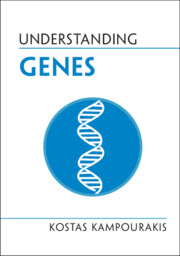Book contents
- Understanding Genes
- Series page
- Understanding Genes
- Copyright page
- Reviews
- Dedication
- Contents
- Foreword
- Preface: Genes, Science, and Science Fiction
- Acknowledgments
- 1 The Public Image of Genes
- 2 The Origin and Evolution of the Gene Concept
- 3 The Devolution of the Gene Concept
- 4 There Are No “Genes For” Characteristics or Disease
- 5 What Genes “Do”
- 6 The Dethronement of Genes
- Concluding Remarks: How to Think and Talk about Genes?
- Summary of Common Misunderstandings
- References
- Index
- References
References
Published online by Cambridge University Press: 17 February 2022
- Understanding Genes
- Series page
- Understanding Genes
- Copyright page
- Reviews
- Dedication
- Contents
- Foreword
- Preface: Genes, Science, and Science Fiction
- Acknowledgments
- 1 The Public Image of Genes
- 2 The Origin and Evolution of the Gene Concept
- 3 The Devolution of the Gene Concept
- 4 There Are No “Genes For” Characteristics or Disease
- 5 What Genes “Do”
- 6 The Dethronement of Genes
- Concluding Remarks: How to Think and Talk about Genes?
- Summary of Common Misunderstandings
- References
- Index
- References
- Type
- Chapter
- Information
- Understanding Genes , pp. 189 - 206Publisher: Cambridge University PressPrint publication year: 2021



